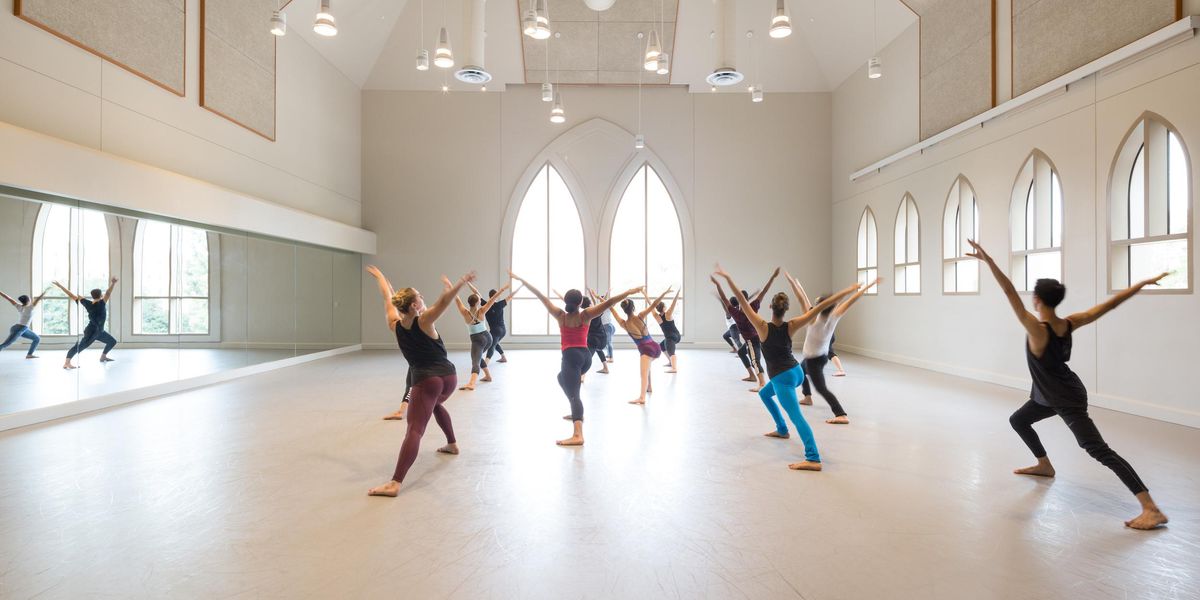On Broadway: Be a Clown
Finding the secret to Chaplin’s deft movements.
Rob McClure worked with a coach to master Chaplin’s physical humor. Joan Marcus, Courtesy Chaplin
A rival comedian once called Charlie Chaplin “the greatest ballet dancer who ever lived”; looking at the physical feats in his movies, it’s easy to see why. As he swoons in the presence of a pretty girl, or battles the material world—a rug, say, or a revolving door—and other even more animated enemies, Chaplin displays the footwork, flexibility, and ballon of a trained dancer.
But he wasn’t, and neither is Rob McClure, who plays the iconic star in Chaplin, the biographical musical set to open on Broadway last month. Even before winning the role, McClure, 30, had done plenty of dancing onstage, including a rousing rendition of “Once in Love With Amy” in last year’s Encores! revival of Where’s Charley?
“I’ve tried to build a career on learning,” he says. In Chaplin, the teacher was director/choreographer Warren Carlyle, and judging from the pratfalls, pliés, and jetés McClure performs in the show, he’s an apt pupil. “No matter what your skill level is,” McClure says, “Warren’s going to push you. In the dance audition, his combination ended with 12 fouettés ending in a split. That combination is not in the show, but he wants to know that if he dreams something up, the person will be capable of doing it.”
Of course, the most challenging part of Chaplin for McClure was not learning the dance steps that Carlyle dreamed up but inhabiting the persona that Chaplin dreamed up, a character whose punched-back shoulders, jutting posterior, splayed feet, and tottering, cane-twirling walk is familiar to millions around the world.
“It started with watching every piece of Chaplin footage,” McClure says. “I fell in love with his aesthetic and his physicality. And I realized that imitation was not going to be enough.” As he delved deeper into the details of how Chaplin’s famous Little Tramp moves, he began to realize that the vocabulary was rigorous and specific. “Nothing is arbitrary,” he says. “I thought I would be learning how to fall without hurting myself and how to do hat tricks. But in that era, that’s what everyone was doing. What made Charlie the biggest performer in the world was what he was doing with his eyes and what he was doing with his mustache. It was his nuances that make that character.”
And just as he had learned to twirl a rope when he was in a production of The Will Rogers Follies and to manipulate a puppet when he was in Avenue Q, McClure, who says he “threw [himself] around a lot” growing up in New Jersey, proceeded to master the nuances. While the show was in its tryout in California, he worked with the clown and Chaplin expert Dan Kamin, who has written several books on the subject and who coached Robert Downey Jr. for the 1992 film Chaplin. “There was a lot of time in front of the mirror trying to get the subtleties of it,” McClure says.
One of the exercises Kamin had him do involved standing still with his eyes closed while holding a pencil vertically atop his head. Kamin then put a piece of paper above the pencil point. “He showed me that I thought I was standing still, but there were all these little squiggly marks on the paper,” recalls McClure. “And he said, ‘Gravity wants you on the floor, so your legs are constantly making all these little minuscule motions to keep you upright.’ ” The key to playing drunk, Kamin taught him, was to “delay all of those corrections a tenth of a second.” With practice, he says, “I developed a mathematical structure to playing drunk, which was really neat. And the more I watch Chaplin films, it really is what he’s doing.”
Although Carlyle opted not to exactly reproduce any of Chaplin’s routines for the musical, McClure must endure some of the same kind of physical battering that Chaplin did as he tumbled headfirst down a flight of stairs or fell flat on his back with his feet in the air. “How did he not kill himself?” McClure wonders. For his part, McClure dons football underwear beneath his padded costume and hopes for the same luck as Chaplin. “In his autobiography, Chaplin says he broke a finger once, and it wasn’t even on a film shoot. He tripped over a curb,” McClure says. “Isn’t that funny?”
Sylviane Gold writes on theater for The New York Times.




